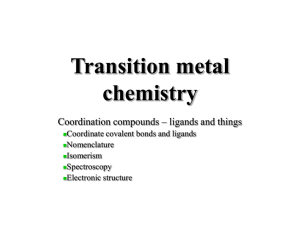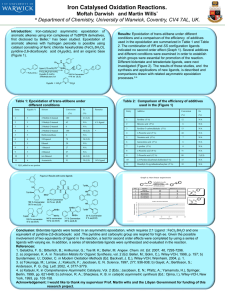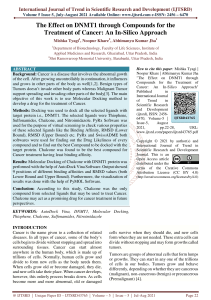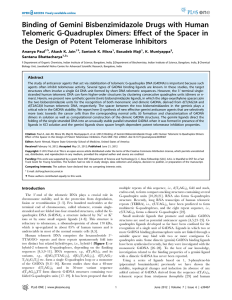BE.011/2.772 Homework Week of April 12, 2004
advertisement
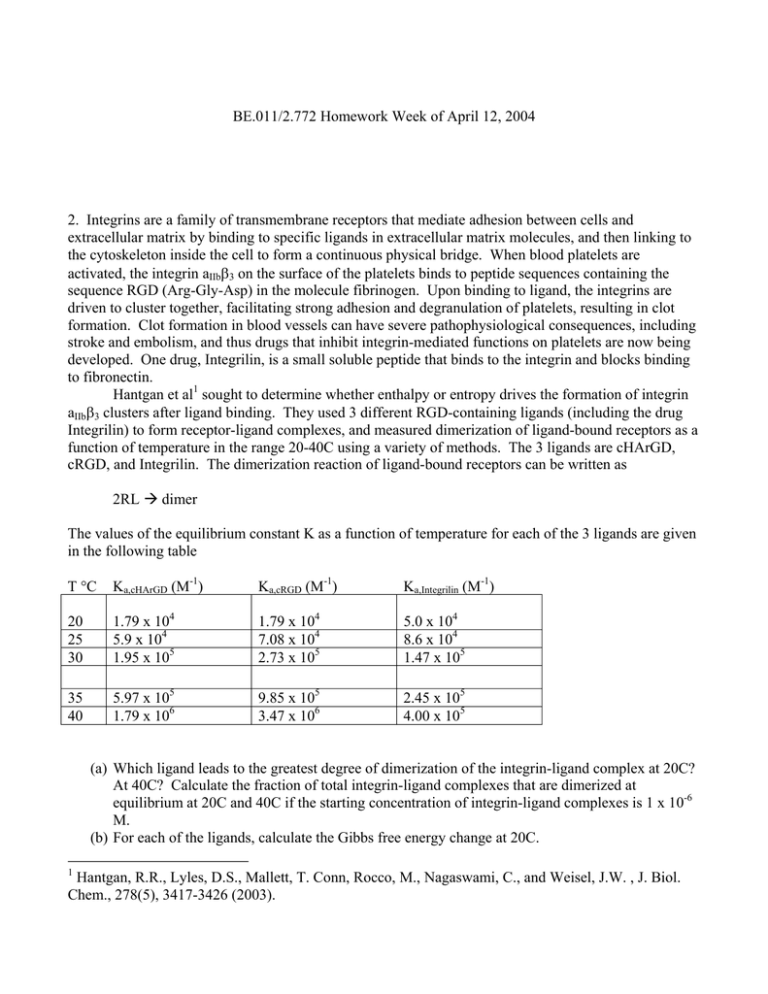
BE.011/2.772 Homework Week of April 12, 2004 2. Integrins are a family of transmembrane receptors that mediate adhesion between cells and extracellular matrix by binding to specific ligands in extracellular matrix molecules, and then linking to the cytoskeleton inside the cell to form a continuous physical bridge. When blood platelets are activated, the integrin aIIbβ3 on the surface of the platelets binds to peptide sequences containing the sequence RGD (Arg-Gly-Asp) in the molecule fibrinogen. Upon binding to ligand, the integrins are driven to cluster together, facilitating strong adhesion and degranulation of platelets, resulting in clot formation. Clot formation in blood vessels can have severe pathophysiological consequences, including stroke and embolism, and thus drugs that inhibit integrin-mediated functions on platelets are now being developed. One drug, Integrilin, is a small soluble peptide that binds to the integrin and blocks binding to fibronectin. Hantgan et al1 sought to determine whether enthalpy or entropy drives the formation of integrin aIIbβ3 clusters after ligand binding. They used 3 different RGD-containing ligands (including the drug Integrilin) to form receptor-ligand complexes, and measured dimerization of ligand-bound receptors as a function of temperature in the range 20-40C using a variety of methods. The 3 ligands are cHArGD, cRGD, and Integrilin. The dimerization reaction of ligand-bound receptors can be written as 2RL Æ dimer The values of the equilibrium constant K as a function of temperature for each of the 3 ligands are given in the following table T °C Ka,cHArGD (M-1) Ka,cRGD (M-1) Ka,Integrilin (M-1) 20 25 30 1.79 x 104 5.9 x 104 1.95 x 105 1.79 x 104 7.08 x 104 2.73 x 105 5.0 x 104 8.6 x 104 1.47 x 105 35 40 5.97 x 105 1.79 x 106 9.85 x 105 3.47 x 106 2.45 x 105 4.00 x 105 (a) Which ligand leads to the greatest degree of dimerization of the integrin-ligand complex at 20C? At 40C? Calculate the fraction of total integrin-ligand complexes that are dimerized at equilibrium at 20C and 40C if the starting concentration of integrin-ligand complexes is 1 x 10-6 M. (b) For each of the ligands, calculate the Gibbs free energy change at 20C. 1 Hantgan, R.R., Lyles, D.S., Mallett, T. Conn, Rocco, M., Nagaswami, C., and Weisel, J.W. , J. Biol. Chem., 278(5), 3417-3426 (2003). (c) The values of ∆H and ∆S are presumed independent of temperature over this range. Using the data in the table, calculate ∆H and ∆S values for each of the ligands. (d) Is the dimerization driven by entropic effects or enthalpic effects? Provide an analysis of the driving force from a molecular perspective.




